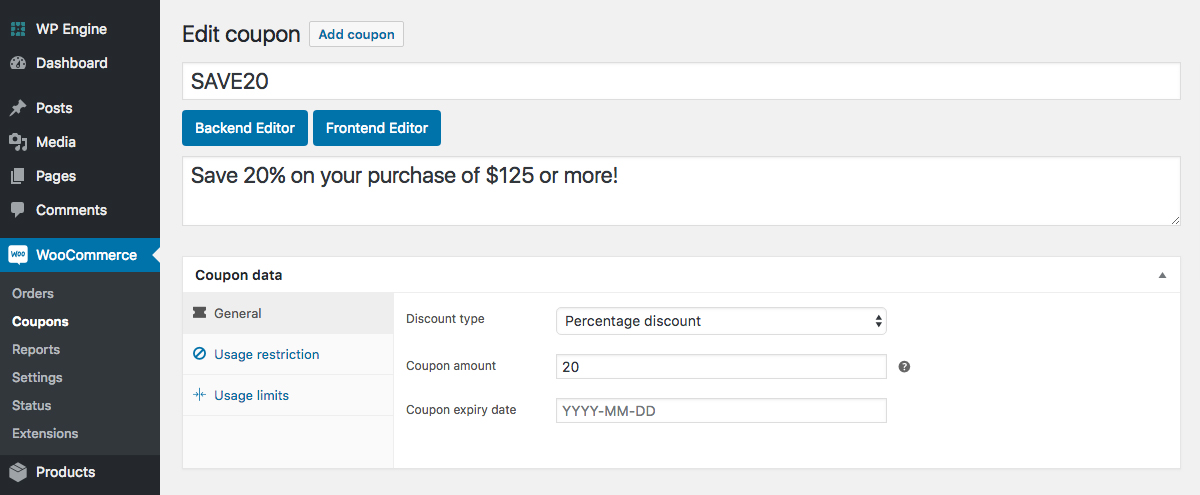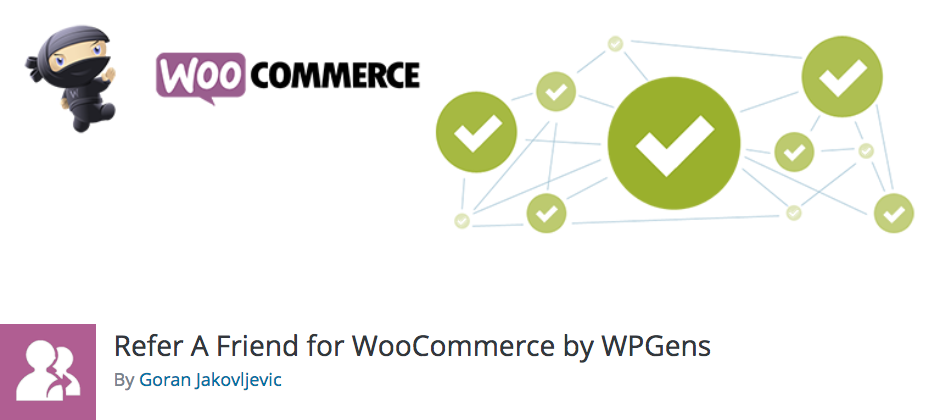How to Increase Visibility for Your eCommerce Site

WordPress is a powerful tool for creating blogs, landing pages, portfolios, business directories and even online stores. It’s easy to use and offers flexible features so it should be no surprise that more and more entrepreneurs are choosing WordPress to start their businesses. But with all of this increased competition, how can you increase online visibility for your WooCommerce powered e-commerce site to be sure your target audience is seeing your products?
Luckily you’ve already made a great choice by using WordPress. As mentioned before, two of the best parts of WordPress are it’s easy and flexible features. WordPress is build on secure and valid code, with intuitive options for creating content. Plus, it’s a powerful enough platform to work great for almost any type of business since you just need to install a plugin to add features as you need them – like installing WooCommerce to start your own shop. It’s that easy.
But once you’ve learned how to build an online store with WooCommerce, there are a few things you can do to increase online visibility for your e-commerce store. Here are 5 easy ways you can get started.
1. Start Blogging

An online store is a great way to sell products or services, especially since WordPress makes it so easy. But one of the best ways to increase your online visibility for your e-commerce site is with a blog. Here are a few key points to keep in mind when you start a blog.
Create Great Content
First, take your time to create content your target audience will enjoy. Remember that your goal is to attract potential customers, so write about topics related to your product niche. If you sell air purifiers write about common air pollutants, how to combat them, and the best filters for people with allergies. If you own a fashion boutique you might want to blog about upcoming festivals, celebrity looks and Instagram trends. You get the idea.
Add Internal Links
Your next step is to link to your own articles within your articles. Depending on your niche, you might have “cornerstone” content that you want to link to when relevant. So as you create new content, it’s a good idea to keep your existing articles in mind. For example, since WPExplorer is a WordPress blog it follows that one of our core articles is about the best WordPress hosting so when it’s natural we add a link to it.
Include Products in Posts
Since you’re trying to increase product sales by leveraging a blog, you really should promote your products in your blog. WooCommerce makes this extremely easy thanks to the built-in, one of a kind WooCommerce shortcodes.

WooCommerce shortcodes used in the Noir WordPress theme.
To link to specific products use the product ids (which you can see in your WordPress dashboard under WooCommerce > Products when you hover on each item):
[products ids="1, 2, 3, 4"]
You can also just show your sale items, as well as add more shortcode attributes like products per page and number of columns:
[sale_products per_page="6" columns="3"]
There are tons more attributes to choose from (just click that link above to learn more). So if you own a pet store and you’re writing about animal enrichment, you can link to some of your top selling cat trees and even order them by their rating or popularity. This is a great way to funnel traffic from your blog directly to your shop.
2. Focus on SEO
SEO should be one of the main focuses of any blog or online store. It’s often said that “content is king” when it relates toSEO, but writing amazing content doesn’t guarantee that your article or your product will rank in search engines like Google or Bing.
There are tons of guides on how to improve your WordPress SEO, but when it comes to SEO for e-commerce your best bet is typically to use a populate SEO plugin with a WooCommerce extension.
Use a Good SEO Plugin
When it comes to WordPress SEO there are two main plugins most users choose from – either the All in One SEO Pack or Yoast SEO. You really can’t go wrong with either option, since they both offer key features such as an XML sitemap (which is absolutely necessary for search engines to find, crawl and index your important pages), content assessment and link redirects. Plus both offer a WooCommerce extension to make managing your shop SEO easy.

The free WooCommerce – All in One SEO Pack extension adds new options for your “products” custom post type. This way you can easily manager the title, description, keywords and title attributes for all items in your shop.

By default, the free Yoast SEO plugin adds their famous SEO manager to product pages so you can optimize your content (based on the Flesch reading test, content length and passive voice), keyword density, links, meta description and SEO title for search engines, images and more. But to stay ahead of your competitors you might want to consider the premium Yoast WooCommerce SEO add-on for advanced features such as rich pins for products, shop breadcrumbs and optimized sitemaps (the plugin will automatically remove filter result pages).
3. Engage on Social Media
With your blog setup and your shop SEO handled, your next step is to leverage your social following to increase online visibility for your e-commerce store. Social media can be a huge source of traffic for your shop, and by offering exclusive deals tied to social sharing you can easily catch new customers with little to no effort.
Offer Exclusive Coupons or Deals

One option is to create coupons or deals specifically for your social media followers. WooCommerce includes a built-in feature to create coupons based on percentages, dollar amount or a specific product. You can also add-in a custom expiration date for a “happy hour sale” or set a use limit so only “the first 15 customers will save 15%” to create a sense of urgency. This is a great way to catch a new customer’s attention on social media and convince them to complete a purchase.
Enable a “Refer a Friend” Bonus

Another option is to offer an incentive for your current customers to recommend your brand to their friends and family with a “refer-a-friend” promo. This way when a current customer shares their link with their friend they receive a $10 discount added to their account, and their friends get a $10 coupon applied to their first purchase.
To add your own word of mouth deals, you can try the Refer a Friend for WooCommerce free plugin extension. The plugin creates a simple referral system with a unique link for each of your customers to share. Then as they refer new users the plugin automatically generates single use coupons for both parties – all you have to do is sit back and watch the referrals come it.
4. Keep it Interesting
Creating content and deals for your audience is a great way to keep folks coming back, but how do you find new people to visit your store? You can of course use traditional advertising methods, but here are a few marketing ideas you can use to keep your site promotion interesting:
- Network and guest post for other blogs to reach new audiences
- Start a newsletter (we use and recommend MailChimp) to share you new blog posts andupcoming shop sales/events
- Run a giveaway for customers to enter to win an item from your shop (we like using Rafflecopter) with your social media and newsletter as entry options
- Publish themed articles for holidays rounding up product collections for NYE, 4th of July, the new school year etc.
- Work with social influencers to get the word out about your brand (please note: this can be expensive, even VERY expensive, but depending on your niche it’s one of the most lucrative investments you can make in your business)
There’s tons you can do to continue promoting your e-commerce store. Just be persistent and creative to continue to increase online visibility when establishing your site.
5. Register with Google

Lastly, we highly recommend getting your shop setup with Google My Business if you have a physical location. This way you can create or claim your business listing on Google Maps, add relevant information (like hours or menus), respond to customer reviews on Google and even promote your upcoming events. Just follow the get started guide to verify and optimize your business.
Google My Business also includes a helpful dashboard so you can see how users are finding your business profile online, what they’re clicking on and where they are (geographically speaking). This information can help you adjust your business operations and marketing strategies to appeal more to your customer base and increase online visibility.
How You Can Increase Online Visibility for Your eCommerce Site
Hopefully you’ve been able to learn something new from our 5 tips on how to increase online visibility for your store. Or perhaps at least a couple of tips have been helpful for your business. Running any business can feel overwhelming at times, but at least if you choose WordPress your website can be a bit more manageable. But creating a blog, focusing on your SEO, using social media, promoting your content and using tools like Google to your advantage there is definitely potential to increate online visibility for your ecommerce site.
Do you have any other questions on how to increase online visibility? Or more tips for other e-commerce site owners? Just leave a comment below.


